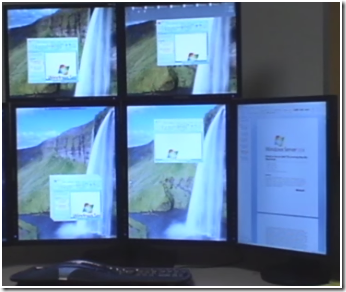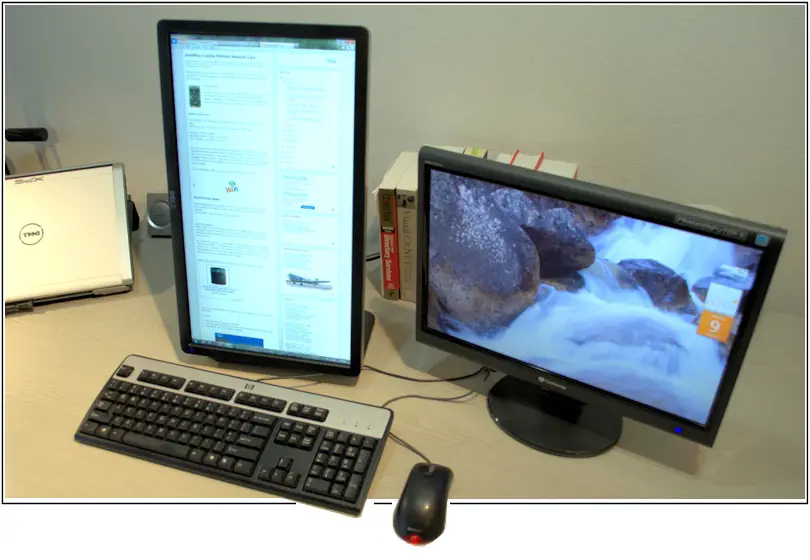Adding Multiple monitors to your setup definitely increases productivity. But it can get all tricky without use of the right software. Windows 7 gives you a decent Multi-Monitor support, but trust me its only the beginning. While hunting down for better Multi Monitor softwares, I tested a dozen of available options and then shortlisted a few options.
Whether you’re a fresh adopter of virtual machines or a longtime lover of virtualization, Parallels Desktop for Mac has optimized support for your external monitors and Full Screen mode! Best video editing software mac. You can view your Parallels Desktop virtual machine on your native display or an external monitor so it looks just like it would if you were using a Windows PC. Not only is it functional but look how easy it is in the below steps:
You can switch to Full Screen mode a couple of ways:
- Keyboard shortcut: Command + Control + F
Monitors For Mac
- From Window mode, choose: View > Enter Full Screen, or click the Full Screen icon in the top right corner of the VM window –>
- From Coherence mode, click the Parallels icon || in the menu bar, then choose Exit Coherence. Then click the View menu and select Enter Full Screen.
- Additional tips for Full Screen mode can be found in this Parallels Knowledge Base article: parallels.com/en/115171
Personally, Full Screen mode is one of my favorite features of Parallels Desktop for Mac because it allows me to utilize my Windows 10 VM on my external Thunderbolt Display here at work. I’m not constantly swiping between Desktops or having or prioritize applications when working. This additionally makes it easy to drag and drop files, copy and paste, and be uber productive (as seen below).
Kayla is running Windows 7 and Windows 10 in macOS Sierra

Here at Parallels, we’re updating our software to ensure optimized usability for our features. Some of our macOS Sierra users have mentioned issues using multiple monitors with early releases of Parallels Desktop. These users sent us detailed reports on their configurations, and with this information, our (awesome) engineering team made some changes and documented many details in the Knowledge Base article. Have you experienced issues with multiple monitors? If so, please make sure that you have the latest release of Parallels Desktop, and that you follow the steps below:
Multiple Monitors Management Software Mac Download

Solution:
Remote Desktop Multiple Monitors Mac
- Go to (Apple Logo) > System Preferences> Mission Control.
- Enable the Displays have separate Spaces:
- Log out from your macOS user account and log back in.
- Enter Full Screen view mode with your VM. To extend the VM to the external display, go to the VM’s View menu > Use All Displays in Full Screen.
- Additional tips for resolving your Full Screen mode issues can be found in this Parallels Knowledge Base article: parallels.com/en/111936
Additionally, there is a new feature with Virtual Machine spaces in Full Screen. This feature addresses past concerns of Parallels Desktop users whom were used to our non-native full screen, with two or more displays showing multiple virtual machine spaces at the same time. This new setting being enables will activate a Full Screen virtual machine on any display automatically. The default state will be OFF for existing virtual machines and ON for new virtual machines that are created.
Your external monitor does not need to be an Apple-branded Thunderbolt display. Our Full Screen mode supports native and non-native displays. Subjectively, I’m excited to preorder OWC’s Thunderbolt 3 Dock to add two ultra HD 4K displays, or a combination of 4K, HD, and other displays with the mini DisplayPort port and additional Thunderbolt 3 port. Windows on Mac with a 4K display? Yes, please!
Have additional questions? Feel free to reach out to our team! Tweet us @ParallelsCares or visit parallels.com/support/
Project Management Software For Mac
Need Microsoft Windows operating system? Buy directly below:
Journey journal app download mac+. Interested in saving time and money by running Windows on Mac without restarting your Mac? Free 14 day trial: Try Parallels Desktop Now
 Features | Documentation | Knowledge Base | Discussion Forums
Features | Documentation | Knowledge Base | Discussion ForumsTaking Advantage of Multiple Monitors
If your host has a standard multiple monitor display, you can run separate sets of virtual machines on each of the monitors. To use two monitors, launch two instances of VMware Workstation. Start one or more virtual machines in each VMware Workstation window, then drag each VMware Workstation window to the monitor on which you want to use it. For the largest possible screen display, switch each of the windows to quick switch mode (View > Quick Switch).
To switch mouse and keyboard input from the virtual machine on the first screen to the virtual machine on the second screen, move the mouse pointer from one to the other. You do not need to take any special steps if VMware Tools is running in both guest operating systems and if you are using the default settings for grabbing input. If you have changed the defaults, you may need to press Ctrl-Alt to release the mouse pointer from the first virtual machine, move it to the second virtual machine, then click in the second virtual machine so it will grab control of mouse and keyboard input.
Multiple Monitors Management Software Mac Pro
Note: Multiple monitor support is experimental in this release of VMware Workstation. It does not work properly with some third-party desktop management software or display drivers.
Multiple Monitor Software Mac
Note: If you switch to full screen mode, VMware Workstation always uses the primary display. To use multiple monitors, you must use either the normal (windowed) mode or quick switch mode.